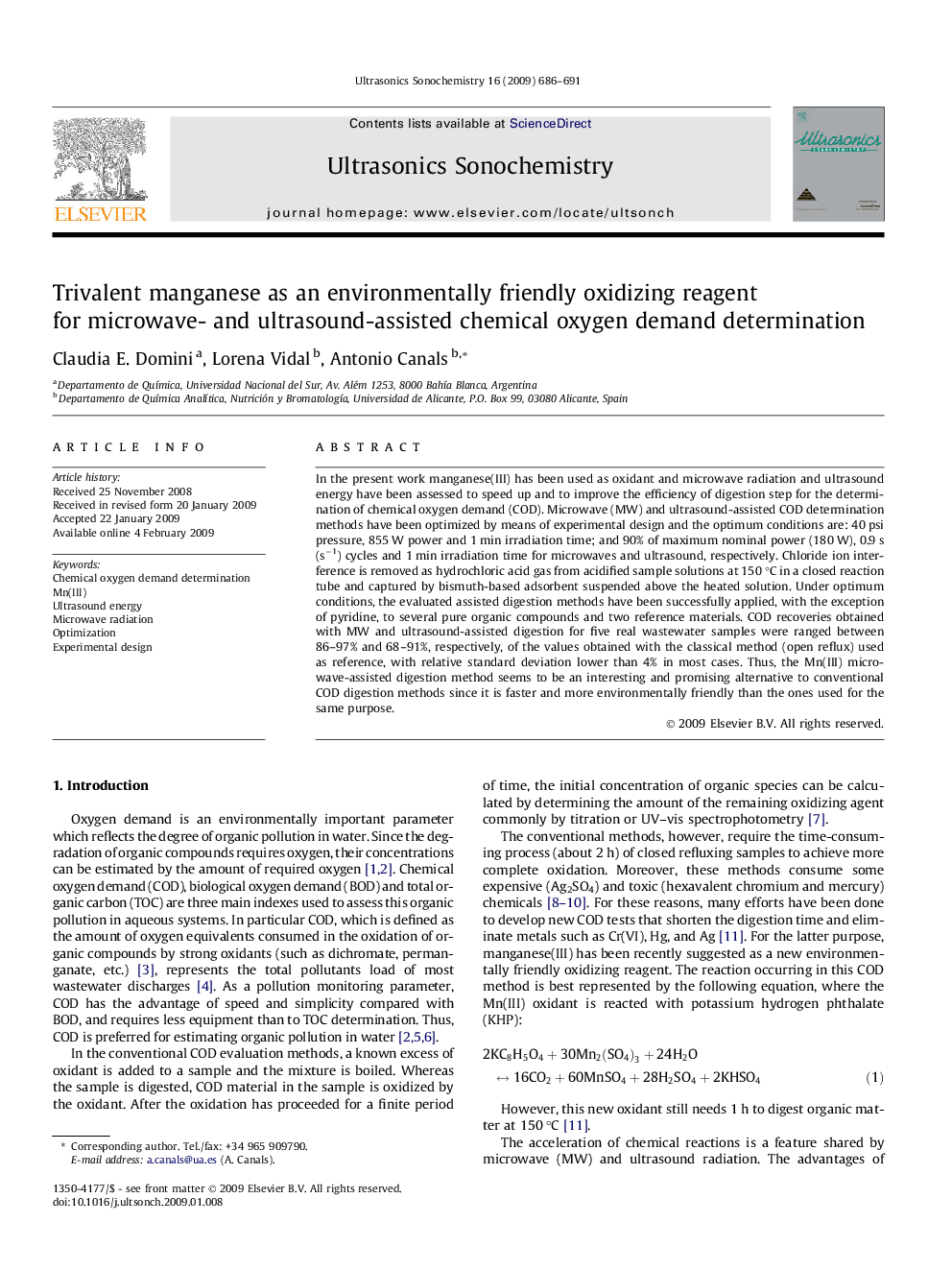| Article ID | Journal | Published Year | Pages | File Type |
|---|---|---|---|---|
| 1265825 | Ultrasonics Sonochemistry | 2009 | 6 Pages |
In the present work manganese(III) has been used as oxidant and microwave radiation and ultrasound energy have been assessed to speed up and to improve the efficiency of digestion step for the determination of chemical oxygen demand (COD). Microwave (MW) and ultrasound-assisted COD determination methods have been optimized by means of experimental design and the optimum conditions are: 40 psi pressure, 855 W power and 1 min irradiation time; and 90% of maximum nominal power (180 W), 0.9 s (s−1) cycles and 1 min irradiation time for microwaves and ultrasound, respectively. Chloride ion interference is removed as hydrochloric acid gas from acidified sample solutions at 150 °C in a closed reaction tube and captured by bismuth-based adsorbent suspended above the heated solution. Under optimum conditions, the evaluated assisted digestion methods have been successfully applied, with the exception of pyridine, to several pure organic compounds and two reference materials. COD recoveries obtained with MW and ultrasound-assisted digestion for five real wastewater samples were ranged between 86–97% and 68–91%, respectively, of the values obtained with the classical method (open reflux) used as reference, with relative standard deviation lower than 4% in most cases. Thus, the Mn(III) microwave-assisted digestion method seems to be an interesting and promising alternative to conventional COD digestion methods since it is faster and more environmentally friendly than the ones used for the same purpose.
